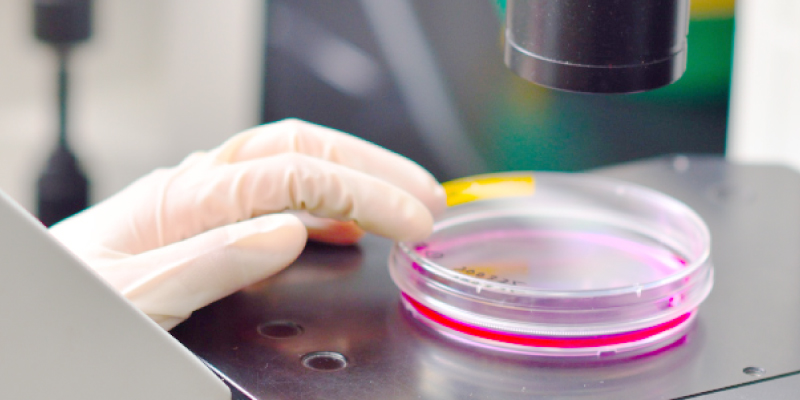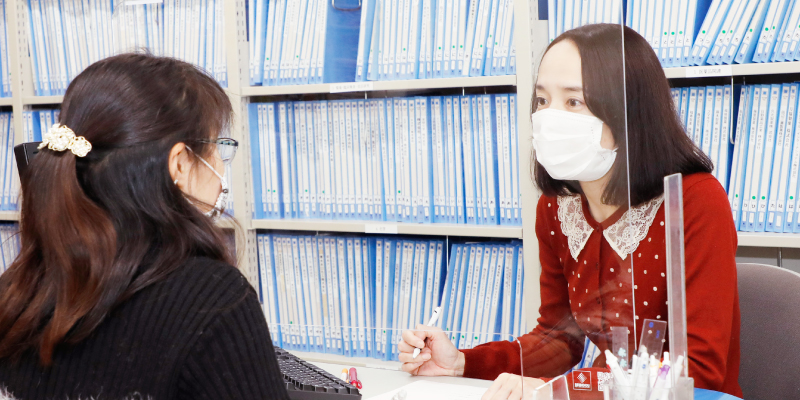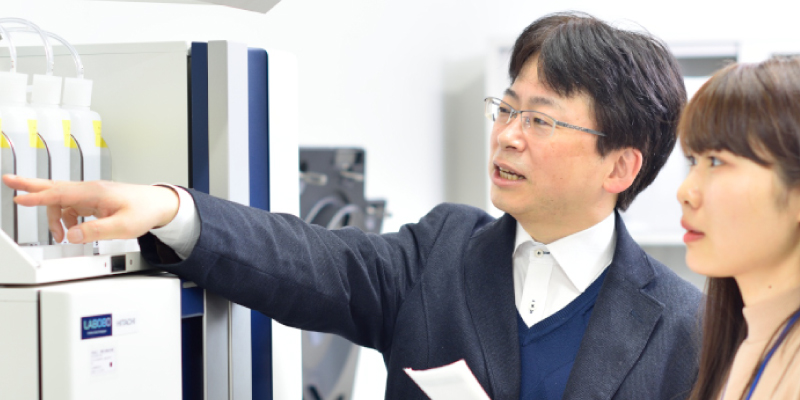
Overview of the Department of Computer Bioscience
Organisms are complex systems rich in flexibility and variety. As is evident from progress in the genome plan and other initiatives, contemporary biology is developing rapidly while giving rise to enormous volumes of information that cannot be understood by the human brain alone.
How can genes with industrial or medicinal utility be discovered from massive genome sequences? How is the structure of proteins, which are biological resources, formed? How do organisms' complex systems function? How have people evolved? What preventive medicine policies would most effectively minimize the treatment costs associated with diabetes? In each case, these are problems that would be impossible to solve without the assistance of computers.
The Department of Computer Bioscience is forging a new research domain by combining bioinformatics (itself a combination of biology and information science) with bioscience experimental techniques in order to tackle these challenging problems. Additionally, by training research technicians with advanced computer programming knowledge, the Department is contributing to the development of Japanese technology and industry.
Department of Computer Bioscience course content
Elucidating the mechanisms of life at the genetic level requires technologies for processing large-scale genetic data at high speeds, integrating and organizing high-dimensional calculation results, and presenting them visually in an easy-to-understand manner. To build systems capable of these things requires advanced image analysis technology, database skills for storing and searching enormous volumes of genetic data, parallel programming techniques for taking maximum advantage of computer resources, and performance-tuning expertise for large-scale computing systems including supercomputers.
Refining skills with three-dimensional graphics and game programming to make learning fun
In computer graphics lab work, students learn the fundamentals of modeling by creating characters, rides, and other objects with Metasequoia, a three-dimensional modeling application.
Students also create sophisticated projects using three-dimensional graphics as part of their graduation research using software such as Photoshop, Premiere, After Effects, 3ds Max, Maya, Mudbox, ZBrush, chromakey software, and motion capture software. In programming lab work, students learn the fundamentals of C# using Visual Studio 2010 and try their hands at three-dimensional game programming, and the Department teaches mathematical fundamentals such as vector analysis and calculus, which are essential in three-dimensional shading and game development.
Special workshops in the state-of-the-art Web technologies HTML 5 and WebGL are provided as part of the graduation research project for students who have landed positions at IT companies. Students also have fun studying embedded programming using inverted pendulums, multi-legged robots, and biped walking robots.
Learning skills that are essential for development in database lab work
After mastering the fundamentals of MySQL in database lab work, students move on to a study of technologies such as PHP and JavaScript, learning skills that will be immediately useful in their working lives by creating bulletin board systems, designing practical databases, and building e-commerce sites.
Tackling super-computing with parallel computers

The Institute was selected for inclusion in the Integrated Database Project in the Life Science Field by the Ministry of Education, Culture, Sports, Science and Technology of Japan, where it was responsible for undergraduate student training. Taking advantage of the results of that training, students are participating in specialized lab work in bioinformatics to discover new genes using computers and disseminate information about those discoveries to the world.
Working with University of Tokyo and Ochanomizu University to train students
This project, spearheaded by the Ministry of Education, Culture, Sports, Science and Technology, seeks to build an integrated database to support research and development efforts by bioscience researchers and technicians. In the training component of the program, University of Tokyo was responsible for graduate-level students, Ochanomizu University for female and adult students, and the Institute for undergraduate-level students.
During the 2008 academic year, students participating in specialized lab work in bioinformatics began working to discover genes contributing to a sustainable world or genes contributing to human health out of the more than 1,000 base sequences registered in international DNA databanks whose function remains unclear. Their goal is to register discovered genes in the database.
Disseminating information about discovered "treasure genes" to the world
So far, this initiative has identified about 7,000 gene candidates including genes related to bioethanol production and cellulose breakdown enzymes as potential genes contributing to environmental conservation and purification. Genes related to the production of antibiotics have also been discovered as potential genes contributing to human health.
These genes have been registered in the database along with the names of the students who discovered them, and information about them is being disseminated to the world through the Institute's website (http://dbcls.nagahama-i-bio.ac.jp/)







